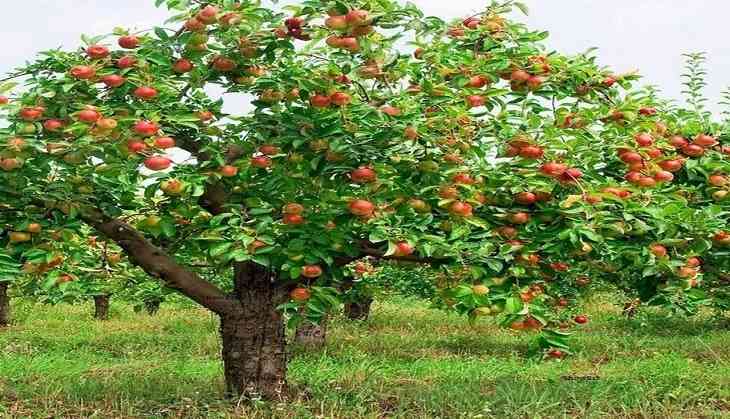
Sir Isaac Newton's iconic apple tree, which is believed to have inspired the British physicist to propose the theory of gravity nearly 350 years ago and holds a special place in the annals of science, may soon have a descendant in India to inspire the next generation of scientists.
The Inter-University Centre for Astronomy and Astrophysics (IUCAA) in Pune is on an ambitious mission to graft a Newton tree shoot on Indian apple trees growing in its courtyard, said its director Somak Raychaudhury.
Clones and descendants of the tree have reached many countries of the world, with a genetically identical tree growing at Newton's alma mater, Trinity College, Cambridge.
People have tried growing trees far and wide from the temperate, shady garden in Newton's home in Lincolnshire, England. One such effort was made in India in 1997 by Jayant V Narlikar, then IUCAA director.
The visual incongruence of Newton beneath a banyan rather than an apple tree spurred Narlikar to act.
"Between 1997 and 2007, there were three attempts made to grow Newton's Apple Tree. There were some trees which were successful and grew apples. The last one of them died by 2007," Raychaudhury told PTI.
"Everybody thought that it would be a wonderful thing to grow the trees, especially since so much astronomy is rooted in Newton's thinking. Like the tale of Adam and Eve, the origin of physics also has an apple," he said.
The IUCAA courtyard has four statues -- Galileo, Einstein, Newton and Aryabhatta. One apple tree was planted behind Newton, one behind Einstein, and another in the public science park.
"The one behind Einstein, just because of the way the sun falls, actually grew and bore fruits. The others grew but never bore fruit," said Raychaudhury.
"There was a particular company that was doing this for us. In 1997, they rooted two apple trees in the courtyard. And finally three trees could be got. They survived quite a bit. One of them bore fruits and we ate the apples, he said.
IUCAA's Newton trees lived for a decade. But then they withered again. Raychaudhury believes Pune's ever increasing temperatures were to blame.
Now, he wants to grow the Newton apple trees again.
The IUCAA is currently experimenting with the idea of grafting a Newton tree shoot onto Indian apple trees
"After I became the director two years ago, I revived the idea, but it is very difficult to get trees across because there are so many rules and regulations regarding importing plants in India that are not native to here.
"Since 2007, we haven't had a Newton Tree in IUCAA... we wanted to grow normal Indian apple trees to make sure we knew how to grow apple trees, said Raychaudhury.
The idea is to grow an Indian friendly hybrid by grafting a Newton Tree' onto an Indian apple tree, he said.
"If you actually do something which can spread the magic of science and generate interest about science, it is welcome," he said, adding that he is in discussions with experts in England to make the tree work.
In his view, Newton's apples need to travel everywhere.
"We have contrived, utterly wrong perceptions about science and people are detached from actual science."
The account of Newton discovering the principle of universal gravitation by observing the fall of an apple, Raychaudhury noted, is very well known and usually dismissed as apocryphal.
"The thought that Newton saw the apple fall from a tree is useful as a story, but there is no official confirmation of it. At the same time, it is appealing and generates interest among people," added Ayan Banerjee, associate professor at The Indian Institutes of Science Education and Research (IISER), Kolkata.
The first written account appears in notes on the pioneering physicist's life collected by Cambridge student John Conduitt in 1726, the year Newton died.
In 1665, it states, the just graduated Newton fled to his family home in Lincolnshire to avoid a plague outbreak. After observing an apple fall from the tree, Newton wondered what force could pull objects in a straight line towards the Earth.
It was the first step towards his theory of gravity, which he went on to publish in 1686.
"I like the story, and if I tell this story to my son or daughter, it would interest them too. Otherwise gravity could be three boring equations. The story makes it interesting," Banerjee added.
(PTI)


